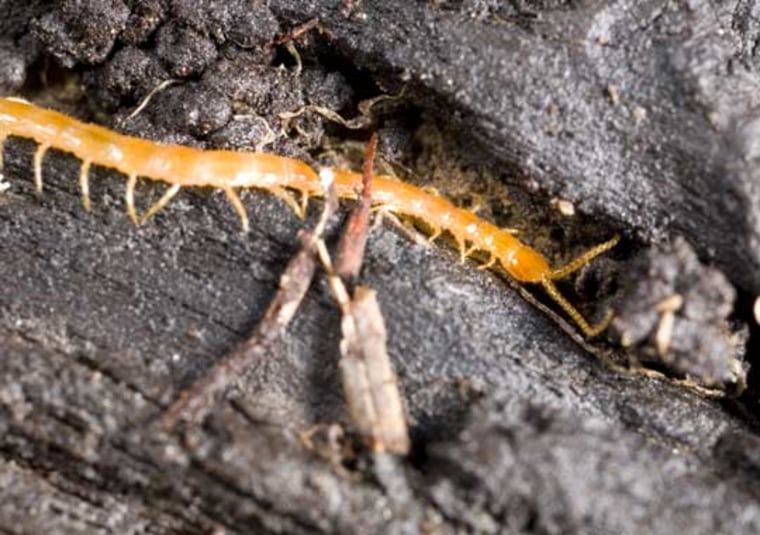Businesses downsize during troubled times, and so do animals, according to a recent study from the French research institute Cemagref.
For animals, the triggers to downsize are not failing banks and shrinking profits, but boosted carbon dioxide levels and soaring temperatures.
During the Paleocene-Eocene Thermal Maximum (PETM) some 55 million years ago, temperature and carbon dioxide levels soared — and mammals shrank in body size by as much as 50 percent.
Even soil-dwelling organisms (or soil biota) experienced body mass drops of between 30 and 46 percent during this time, said University of Kansas scientist Stephen Hasiotis and Kansas Geological Survey geologist Jon Smith.
Evidence of body size shrinkage this extreme time in the past could point to signs of shrinking among animals responding to global warming today. And these animals could serve as key signals of climate change in their environments.
Hasiotis and Smith initially didn't expect to find any discernible change in the underground environment during PETM — nor the creatures that lived there including insects, arthropods, crustaceans and earthworms.
But the researchers found the tiny creatures' food sources, mainly plant material, weren't as nutritious during higher atmospheric levels of carbon dioxide, said Hasiotis.
The researchers arrived at their findings by examining fossilized nests and burrows preserved in the Willwood Formation, a slab of mud stones and sandstones in Wyoming's Bighorn Basin.
The PETM-era fossils all suggested body sizes smaller than those seen in earlier and later periods, but the underground fossils didn't show the mass extinctions that wiped out the surface world.
"From the trace fossils, we did not observe widespread extinctions of soil biota," said Smith. "The same types of trace fossils were present before, during and after the global warming event. Their abundances and distributions, however, did dramatically change."
For example, crayfish burrows commonly dotted floodplain deposits before and after the PETM, but were rare during the PETM, likely due to dry conditions on the ancient floodplain during the global warming event, said Smith.
Fast-forward to the present. The PETM's amazing shrinking worms resonate sharply in light of modern increases in carbon dioxide and temperature. In fact, studies have found indications that some animals may be shrinking today.
In July, 2009, researchers at the Cemagref institute observed a 50 percent body mass losses in fish populations. On land, Scottish sheep may have dropped in body size for similar environmental reasons, according to a 2009 study led by biologist Tim Coulson of Imperial College in London.
Hasiotis and Smith argue that subtle changes may already be occurring in smaller organisms living in the soil. They want to get their hands on museum insect archives to prove it.
"We are beginning this undertaking by planning to focus on species of beetles and cicadas that are abundant, easy to identify and have a significant part of their life cycle underground," said Hasiotis.
Both researchers are frank about the magnitude of their proposed task, but say that the results could show which organisms make the best bioindicators of climate change. Soil-based bioindicators could prove particularly telling — their environment links the atmosphere, biosphere, hydrosphere and lithosphere into one system.
Larger soil organisms also play a vital role in the nutrient cycle, said Hasiotis.
"This global food network depends on a whole host of soil biota for regulating soil processes that make modern agriculture possible," said Smith. "We should all be concerned because any negative effects on these soil-regulating biota due to rapid climate change could potentially impact our ability to feed ourselves."
